Developed as a “hospital in a garden and a garden in a hospital”, Khoo Teck Puat Hospital (KTPH) takes being a healing environment a step further.
Plants and gardens can promote a sense of well-being,
but not all patients are able to visit the hospital gardens.
Senior occupational therapist Giang Thuy Anh (bottom left) decided that that wasn’t right and did something about it. She decided to bring the garden to them using mobile horticulture trolleys, an initiative she calls Garden by the Bed.

“The objective of our project is to improve the well-being of the patients. Many of our patients in the acute care wards are not fit enough to go to the garden. That’s why we want to bring the garden to them. That was the idea behind Garden by the Bed,” she says.
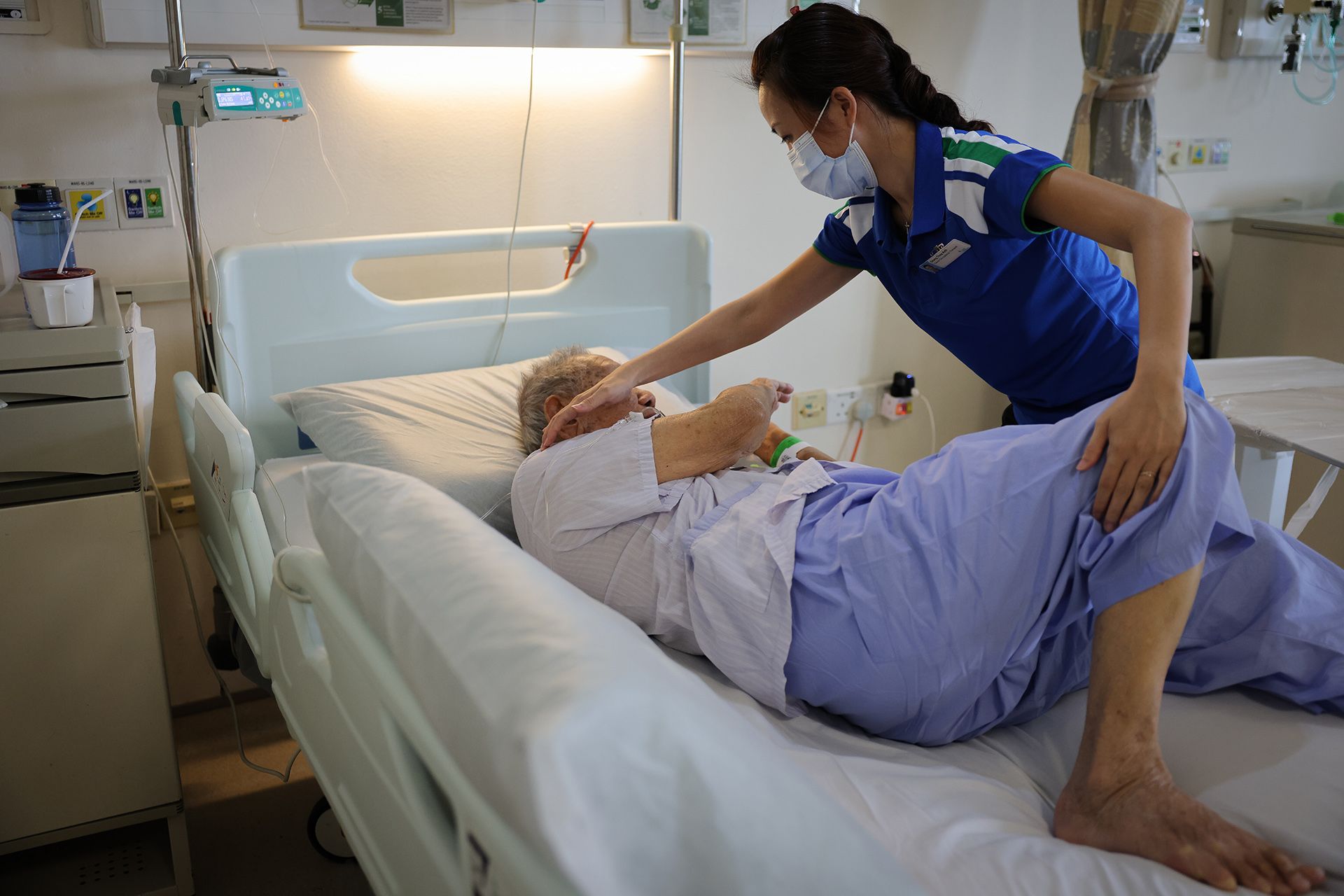
Horticultural therapy uses plants or plant-based activities for healing and rehabilitation. Using this therapy, healthcare workers can work on a patient’s sensory, cognitive and physical abilities.
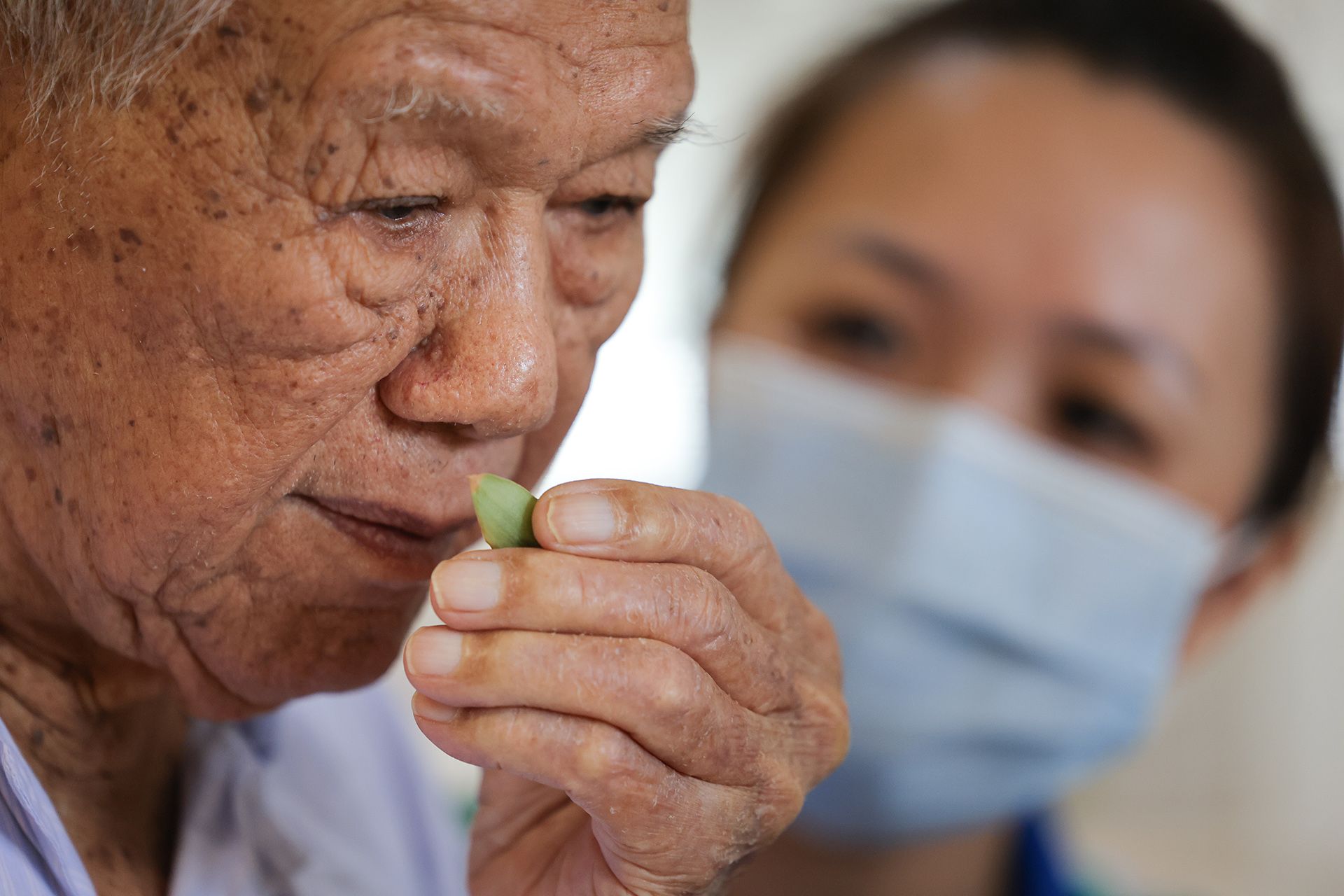
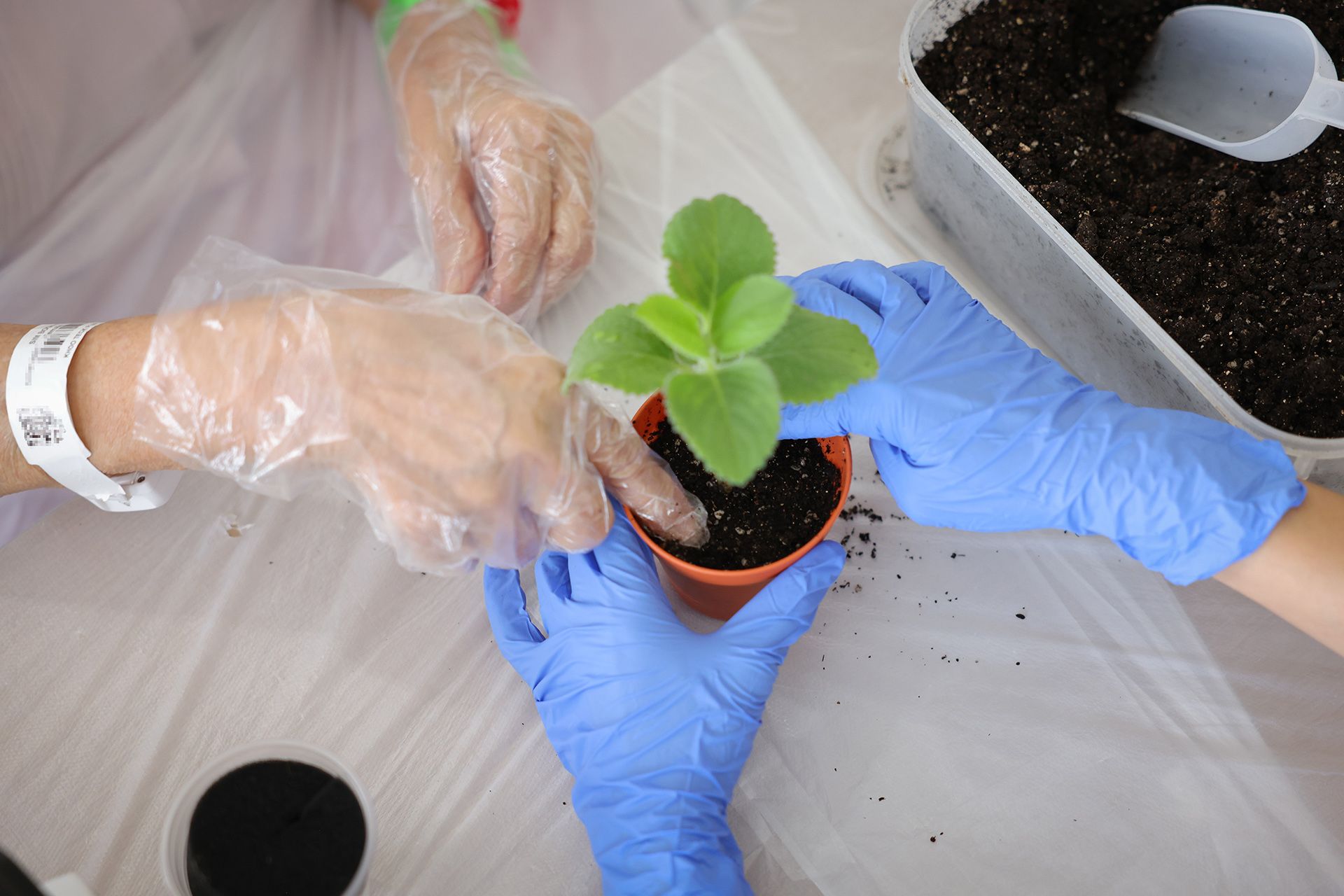
Ms Giang spearheaded the Garden by the Bed project in 2022.
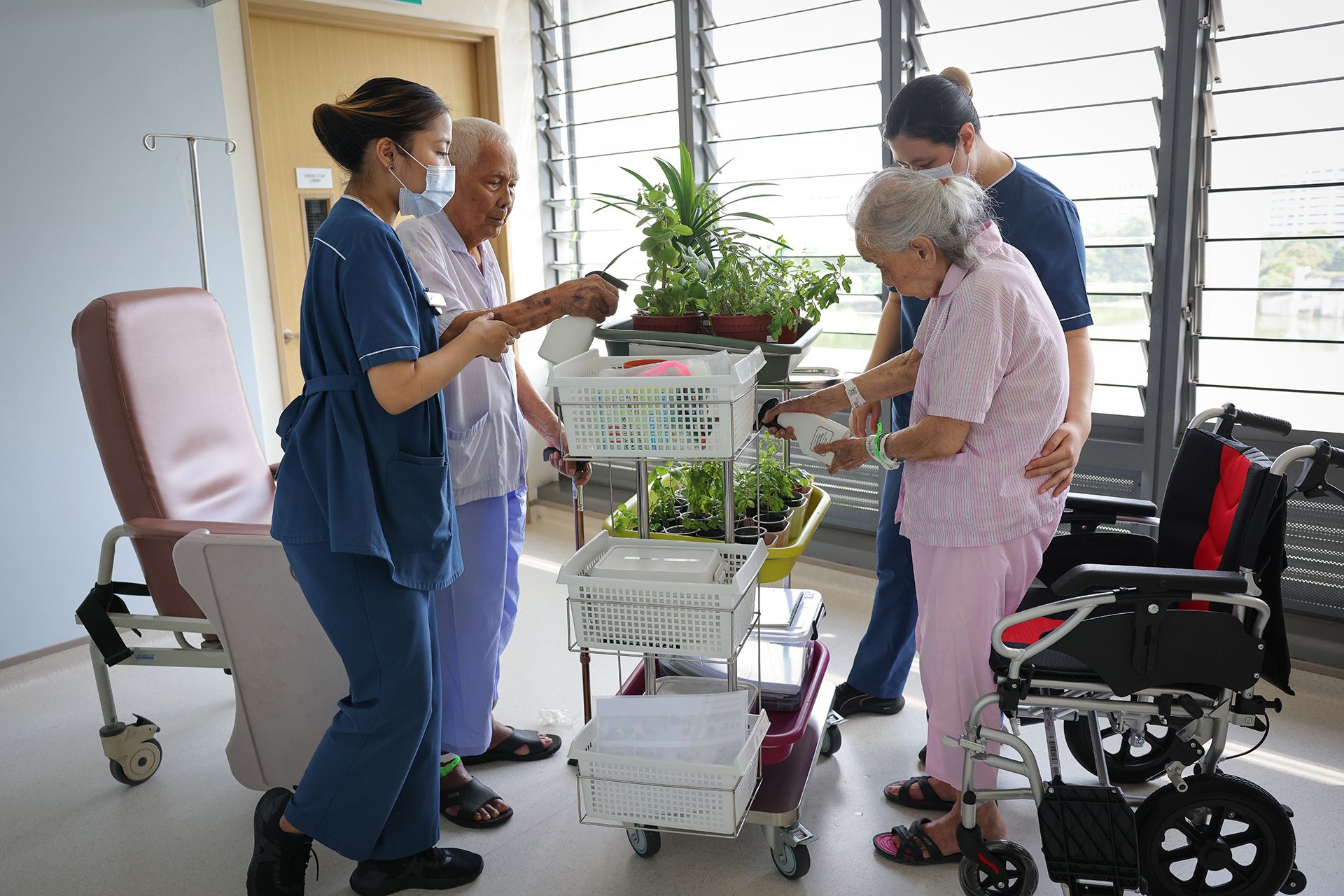
She and a team of occupational therapists and volunteers have made nature accessible to patients in six KTPH geriatric acute care wards today.
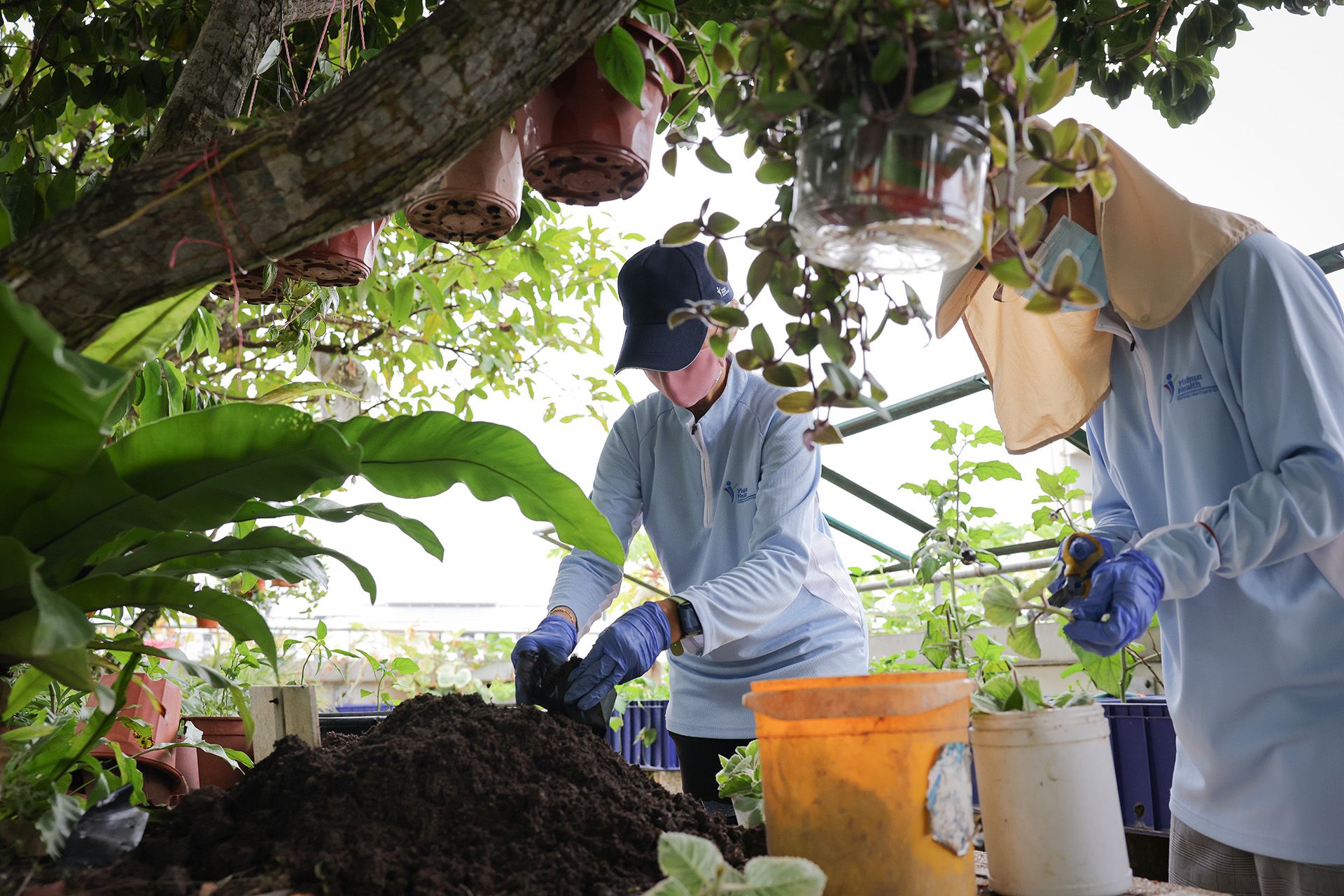
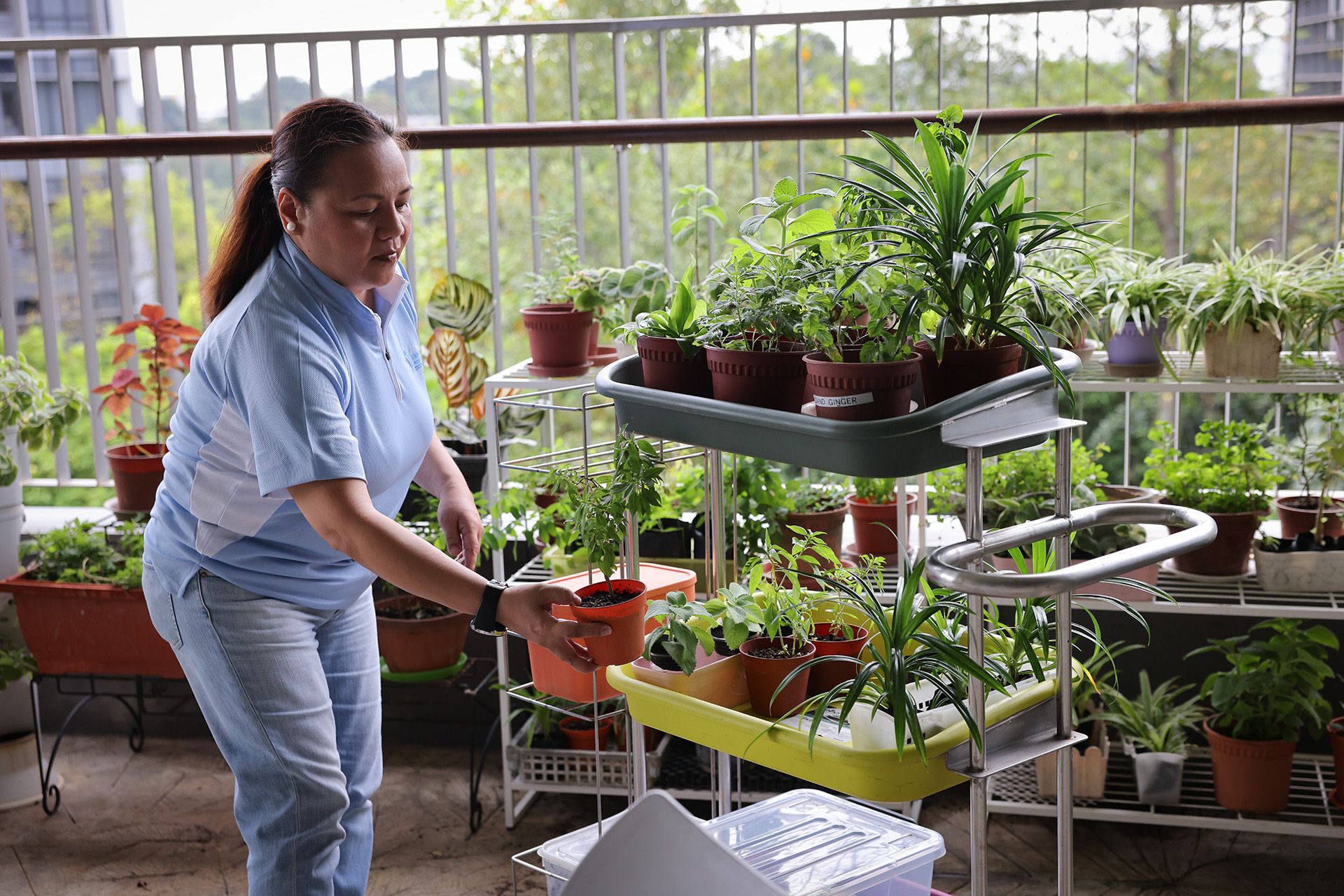
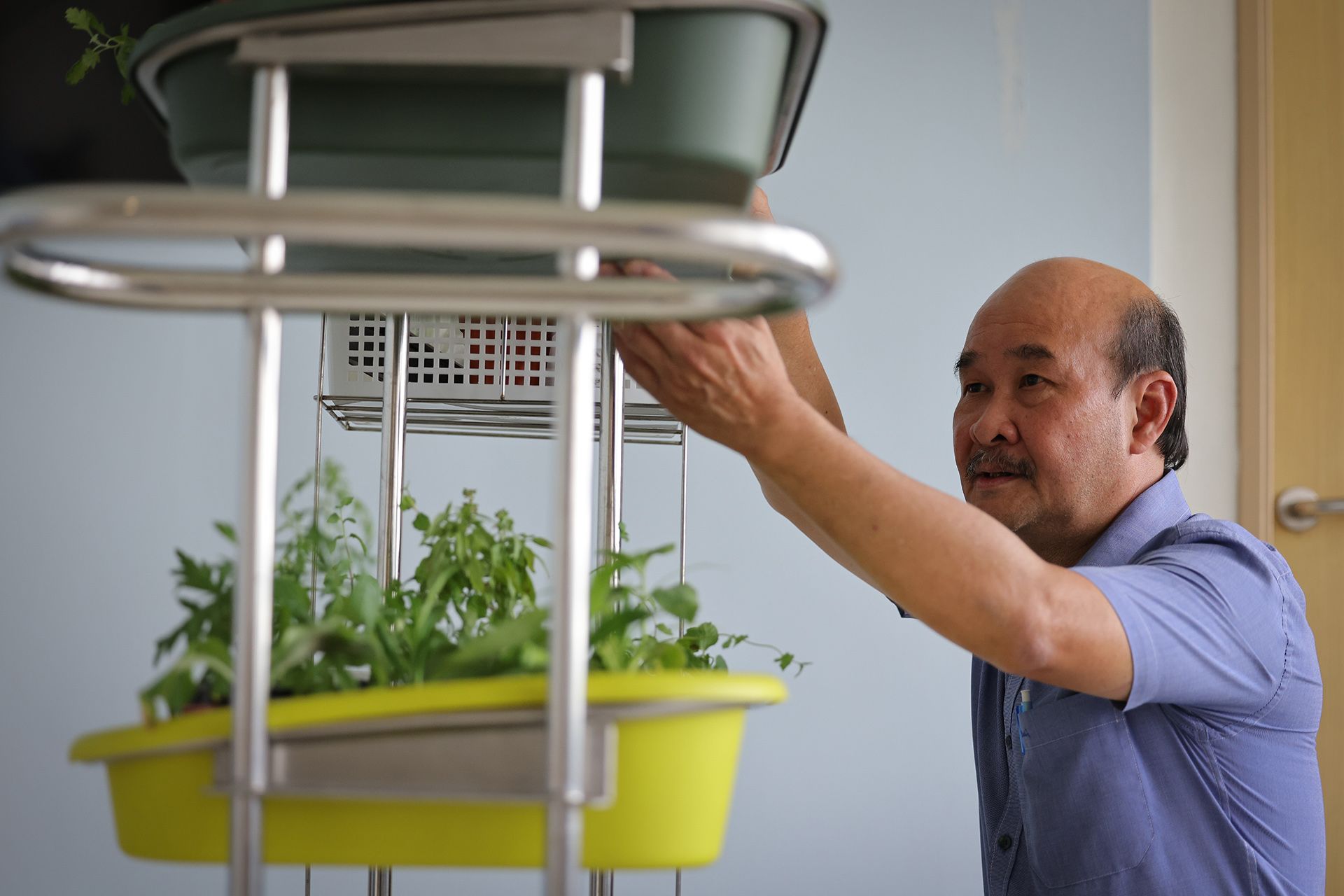
Weaving through the busy corridor of the acute care ward, Ms Giang pushes a custom-made trolley, peering over pots of plants on top of the cart and says: “Usually when we push this, many patients will sit up. Some ask if we are selling the plants.”
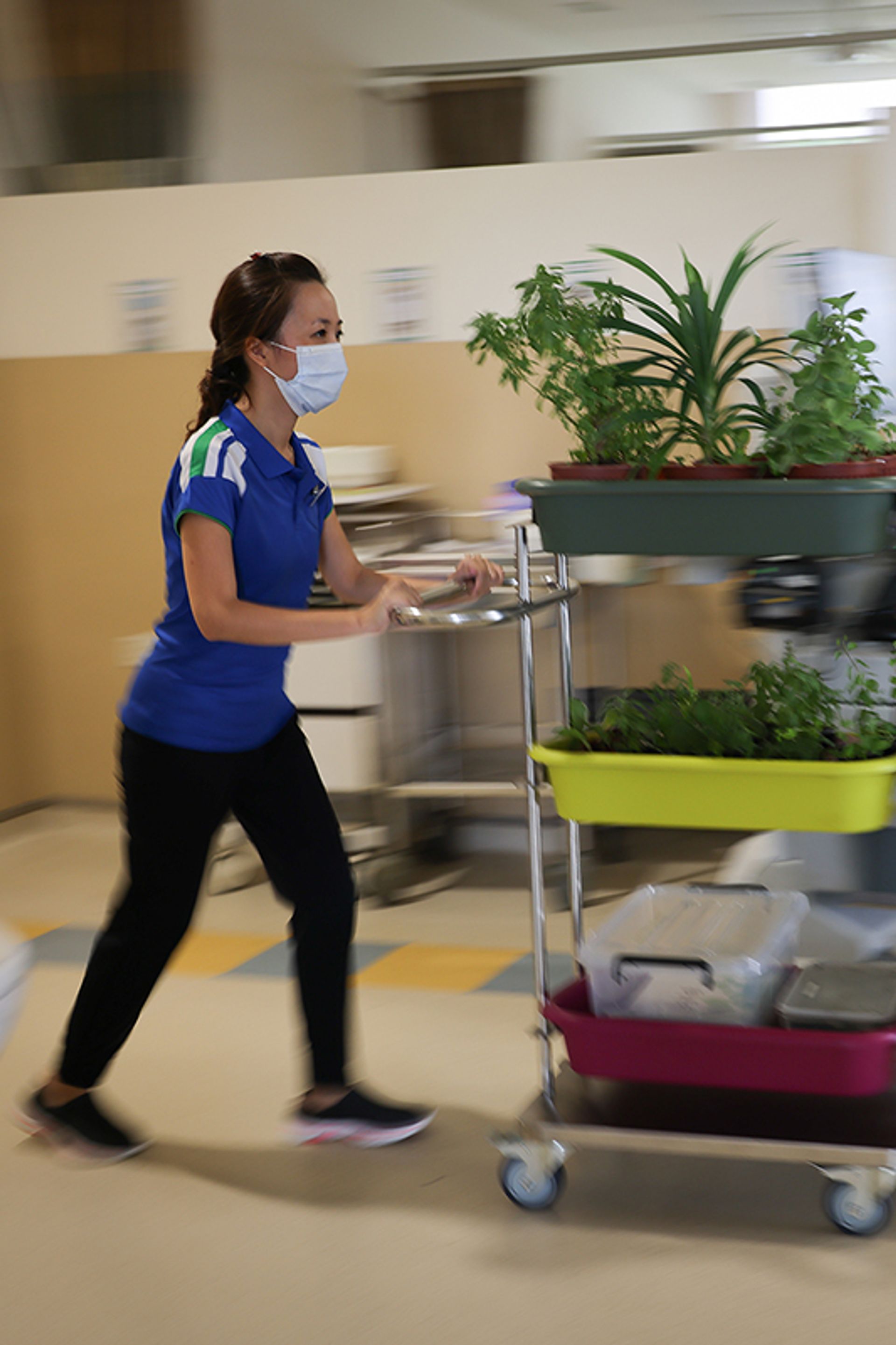
Indeed, patients in their beds watch her in anticipation.
Ms Giang finally stops at the foot of a patient’s bed and greets him brightly in Mandarin: “Good morning, Mr Lim! Do you want to do some planting today?”
She introduces six plants from the trolley chosen for the programme and shows Mr Lim Sue the “plant of the day” – Indian borage. The plants, which include mint, basil, mugwort, Indian borage, pandan and sand ginger, were chosen for their scent and the texture of their leaves, as part of the sensory component of horticultural therapy.
Ms Giang’s interactions with patients as part of this project typically last 20 to 30 minutes. Mr Lim’s face lights up as he listens to her.
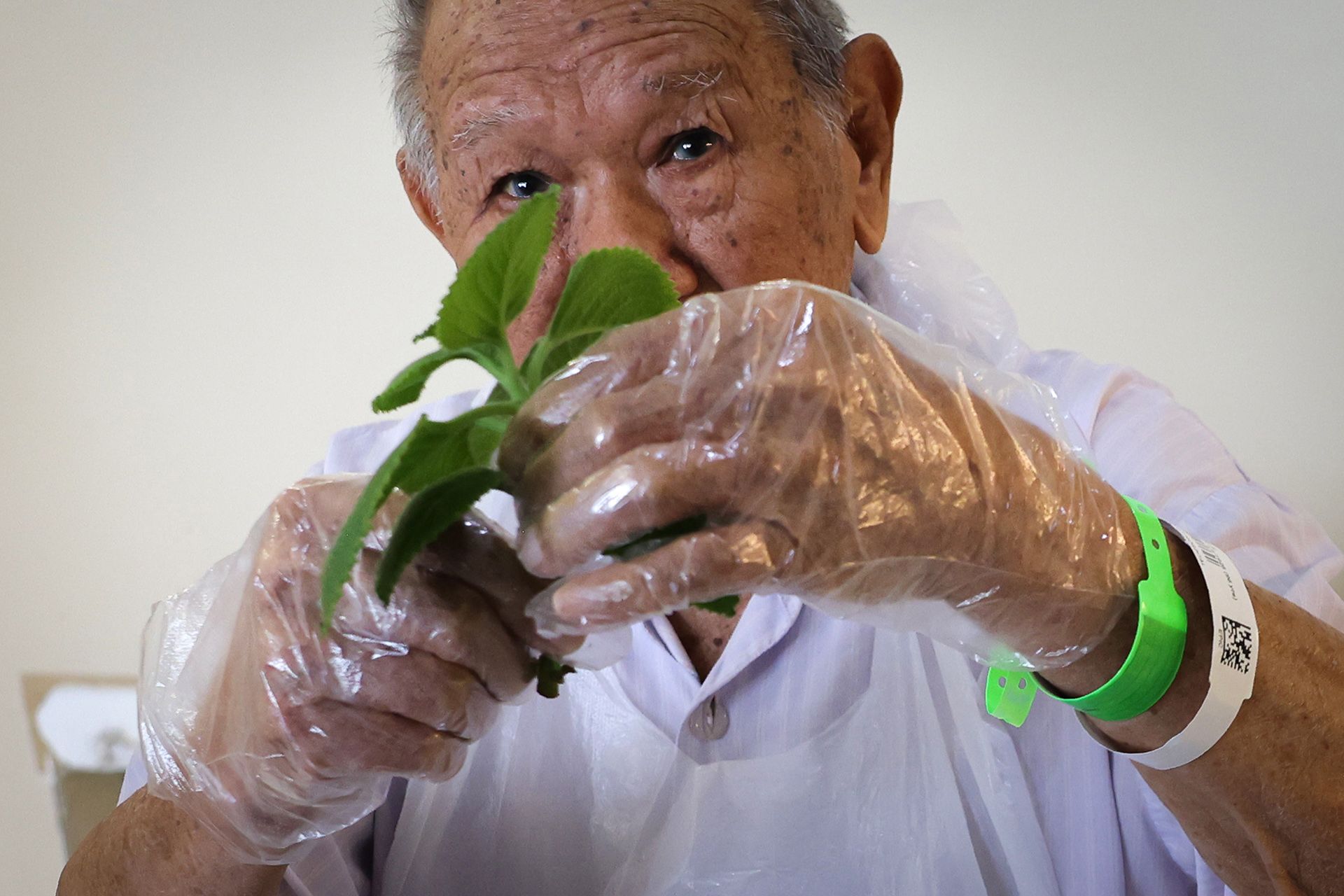
The 95-year-old has been in the hospital for a week. Using a trowel, he now enthusiastically pours soil into a pot that Ms Giang had given him and then places a young plant inside, a bright smile on his face.
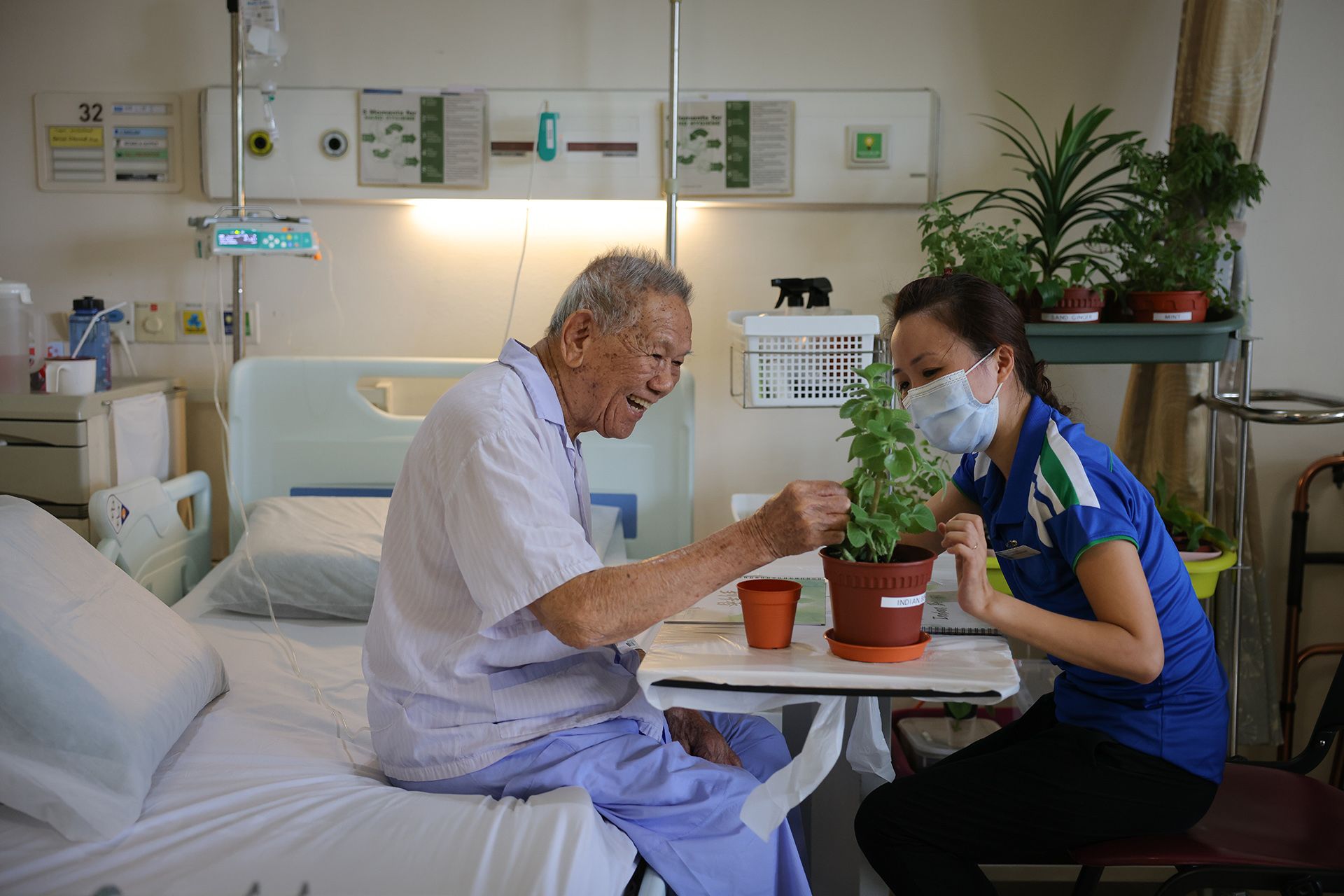
Ms Giang says: “We recognise that, in the hospital, patients have very low mood because of the prolonged stay in their beds. We wanted to brighten up their days. That is why we wanted to bring nature closer to them.
“As an occupational therapist, my aim is to get them to feel better, physically and mentally. When we bring the plants to them, they find it interesting as it is something they have not seen in the hospital before.”
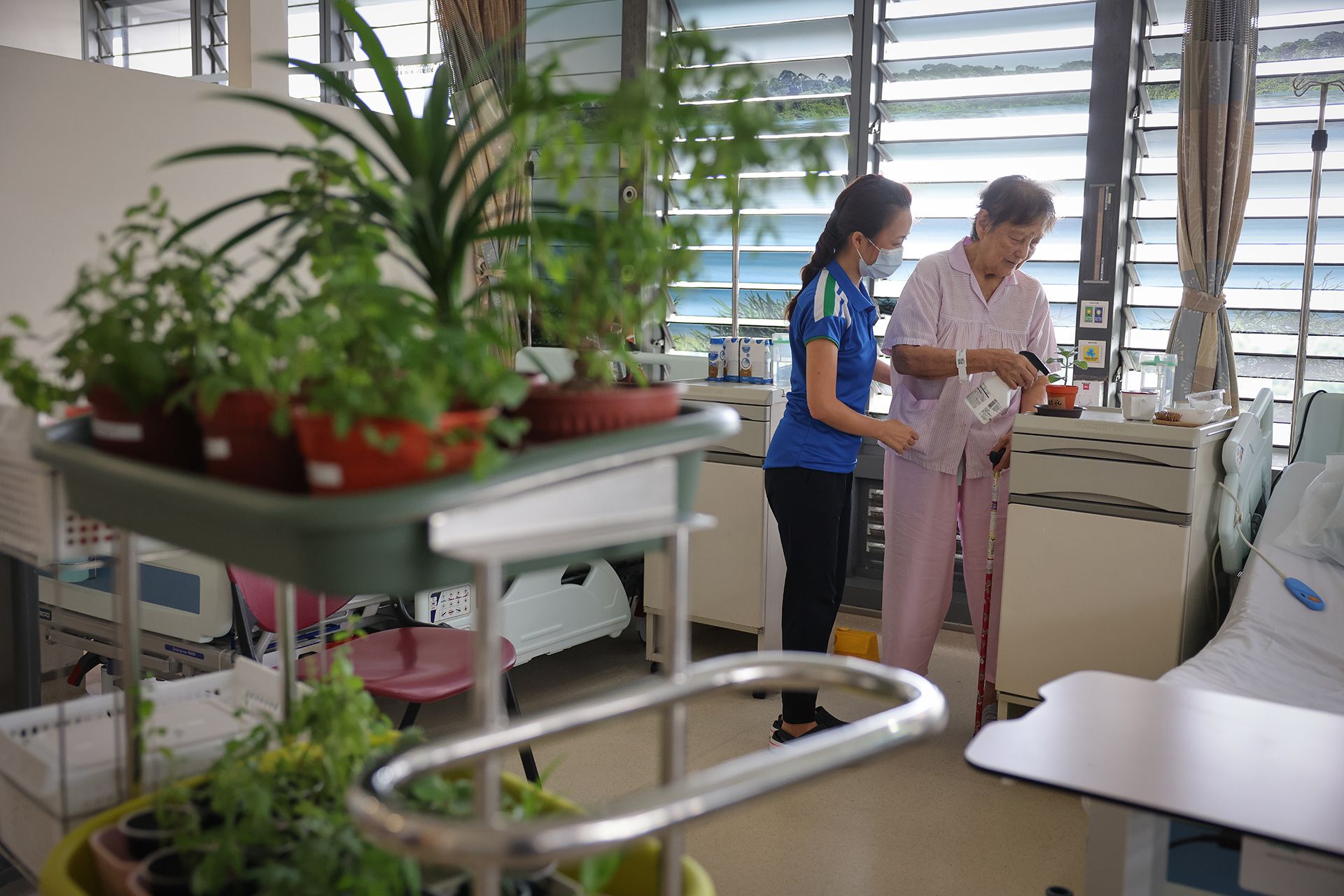
She says the patients’ moods have clearly improved since the start of this project.
HANDS ON
“As they participate in the planting and see the finished product, they feel happier. They feel that they have accomplished something,” says Ms Giang.
The finished product – a newly potted plant labelled with the patient’s name – is placed by their bedside.
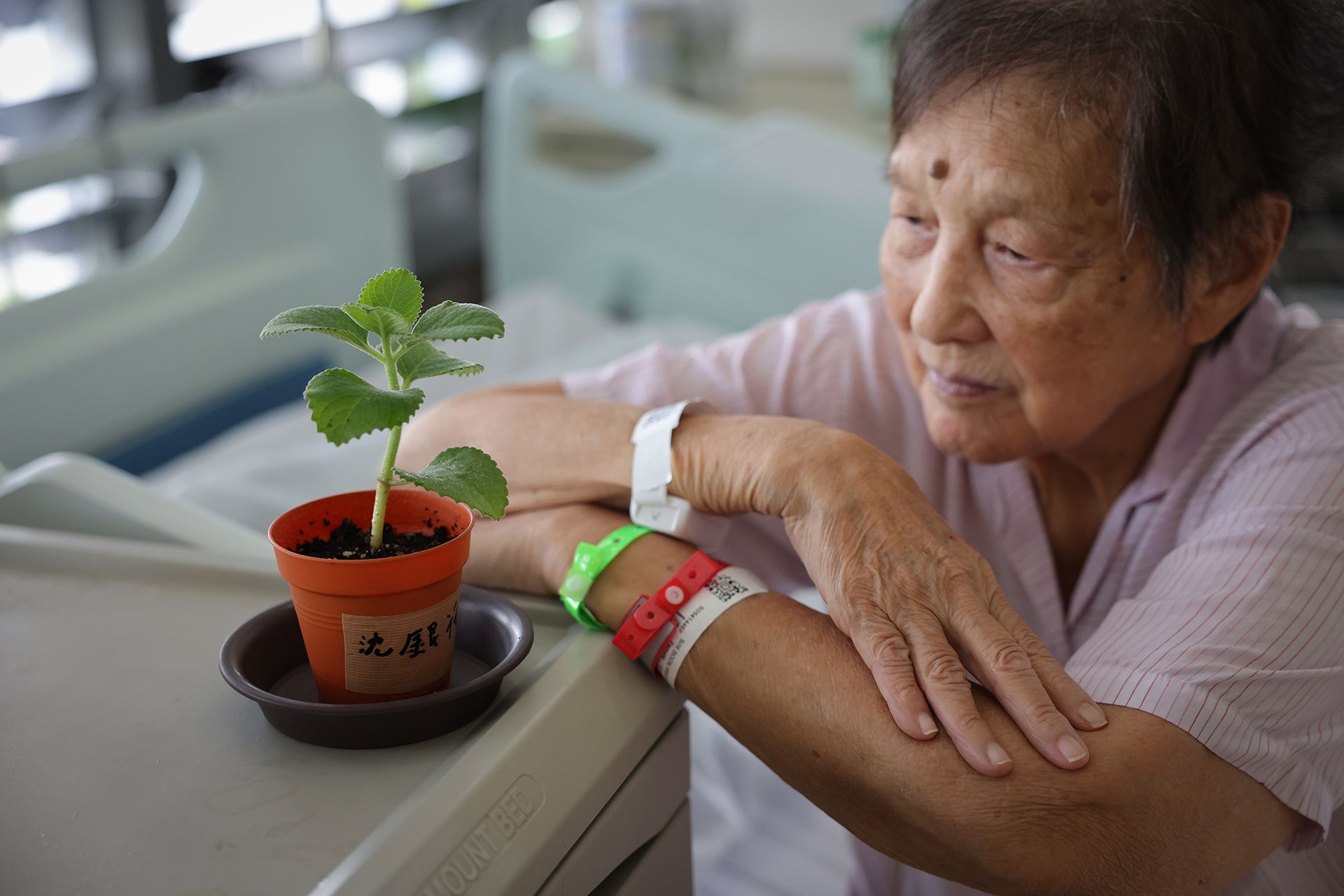
Patients are encouraged to care for the plants as they continue to receive treatment in the hospital, and they can bring the plant home when they are discharged.
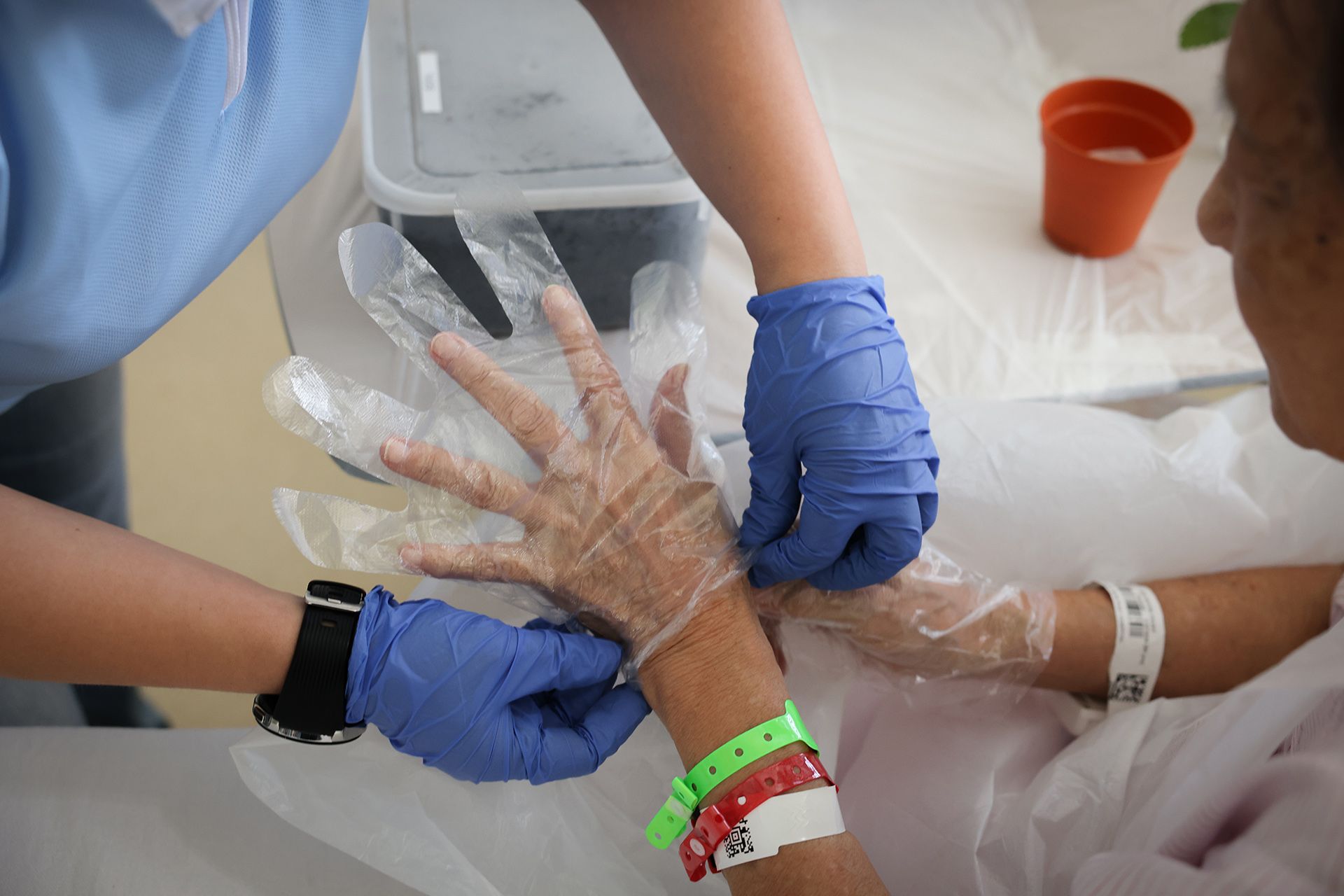
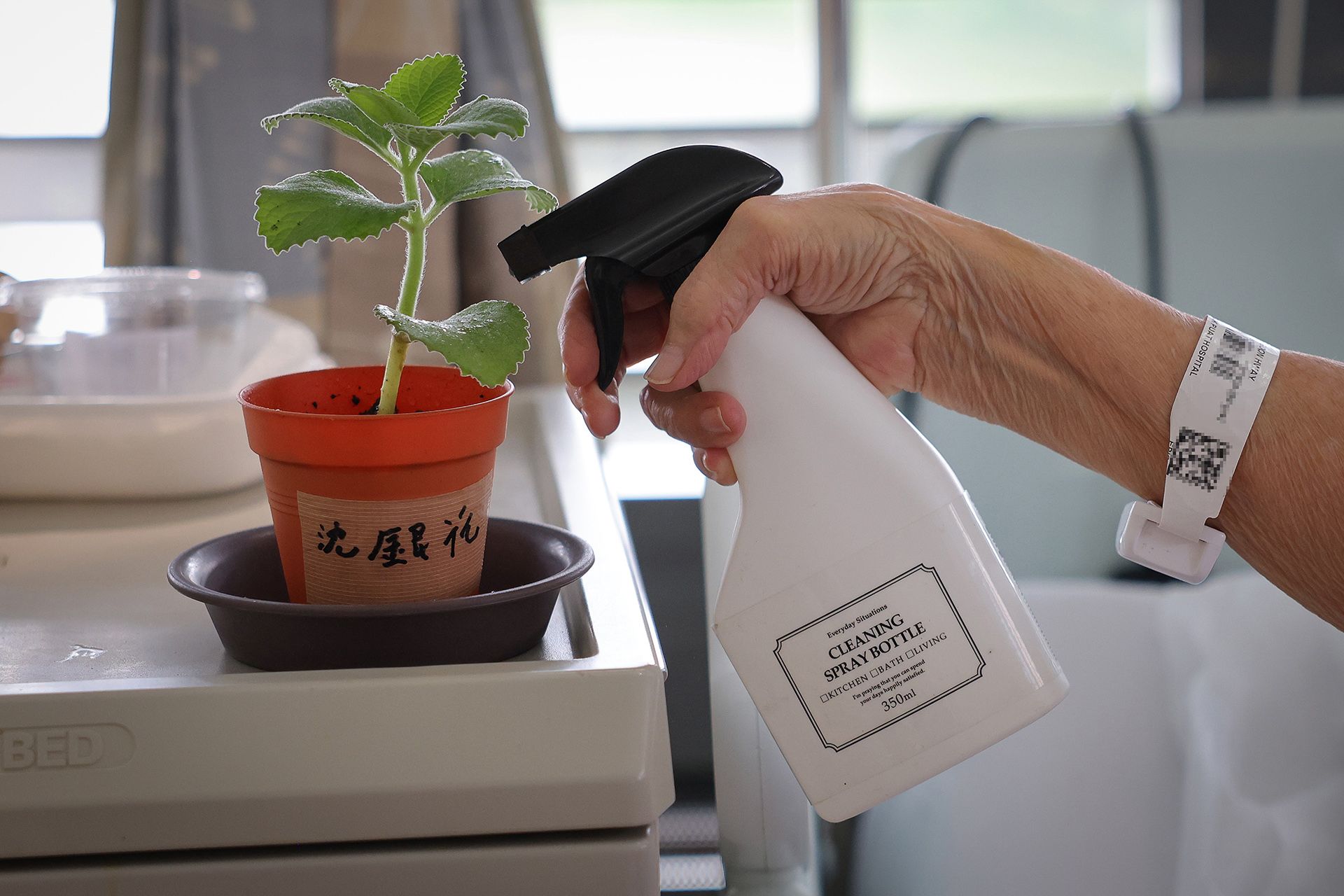
Another patient, Madam Pua Hor Lee, 96, rubs the leaves of the Indian borage between her fingers and says she has a different variety of the plant at home – hers has furry leaves and this one does not.
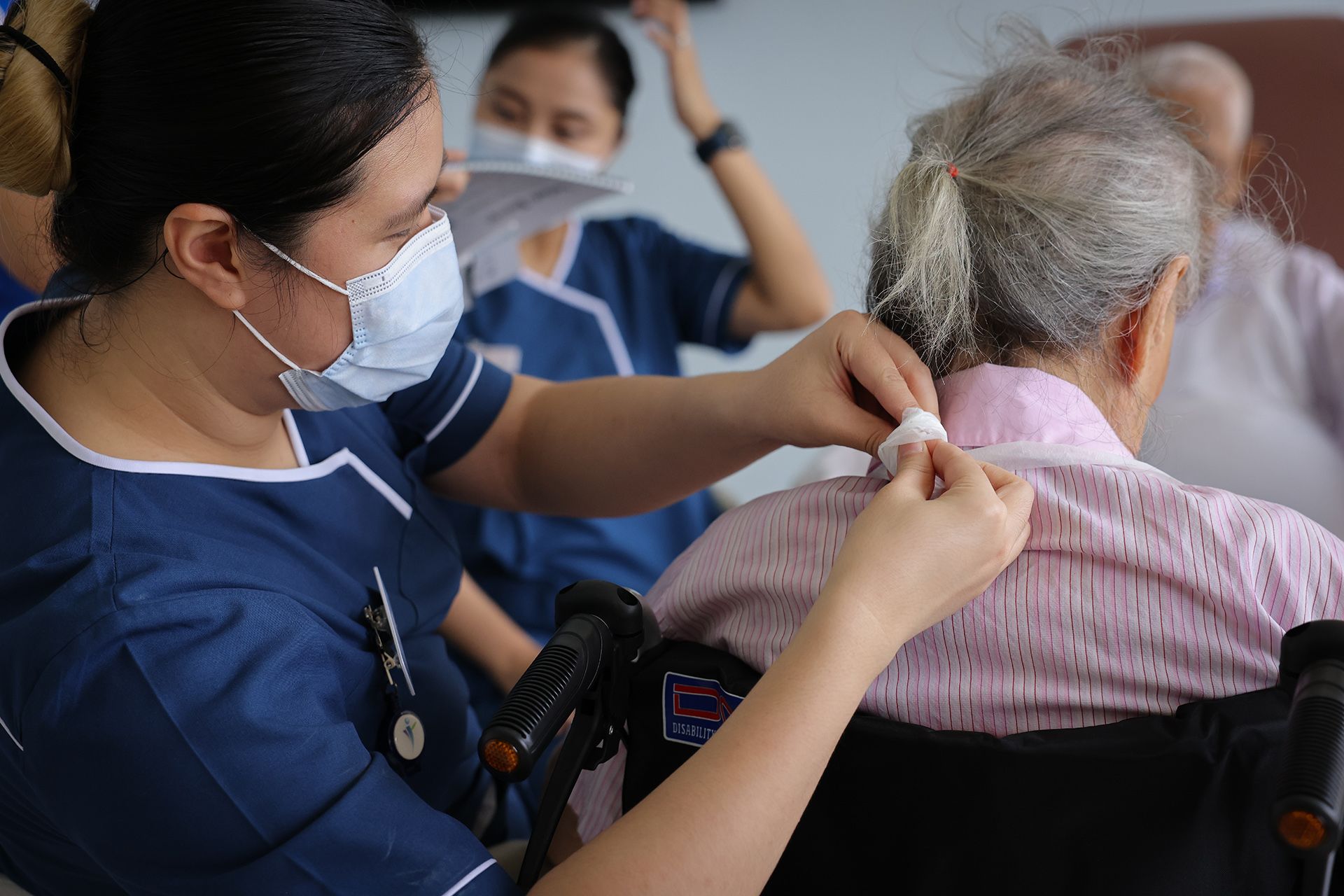
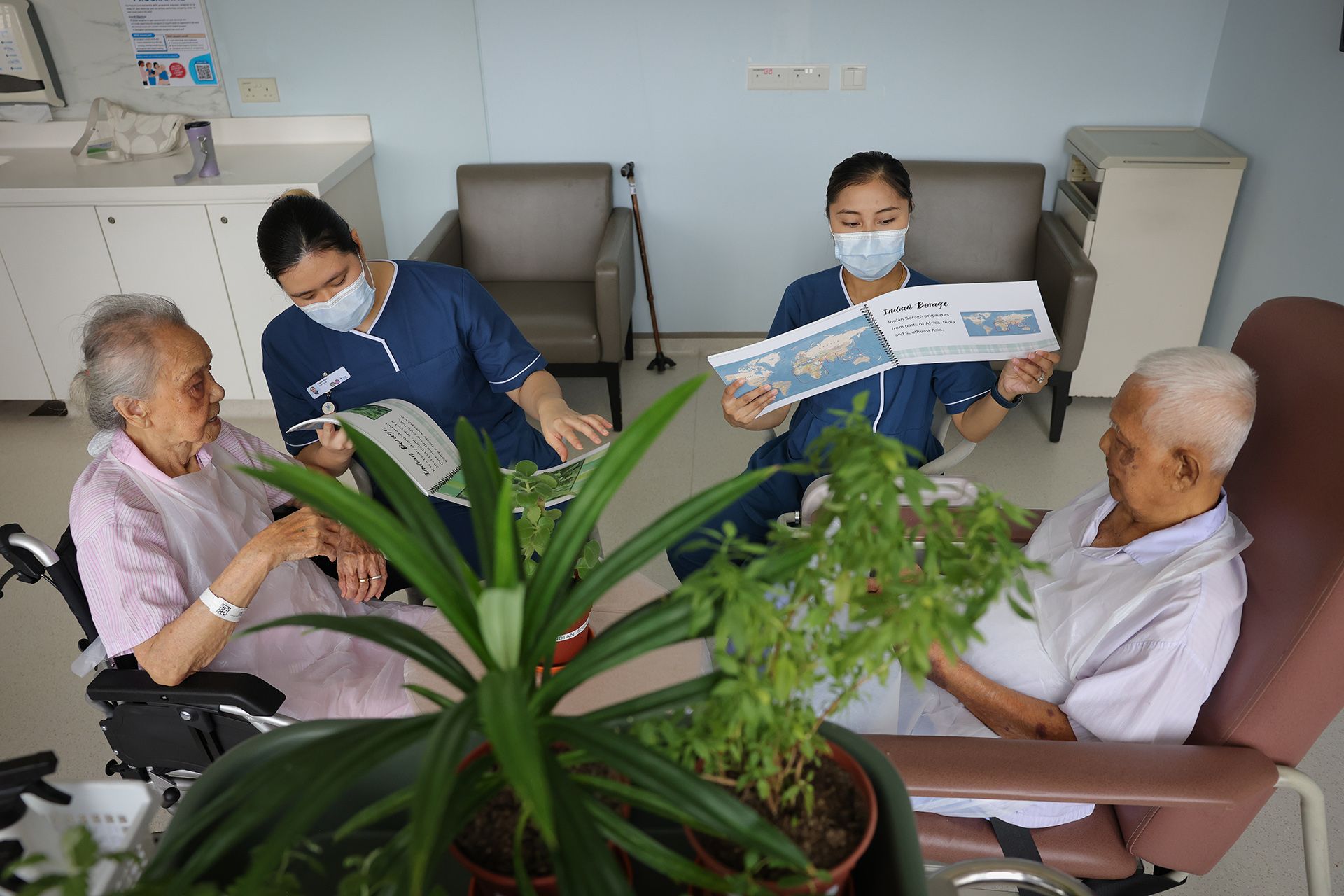
She shares about the plants she grows at home, such as pomegranate, which produces bright red flowers, and laments that she does not have the strength to water them now.
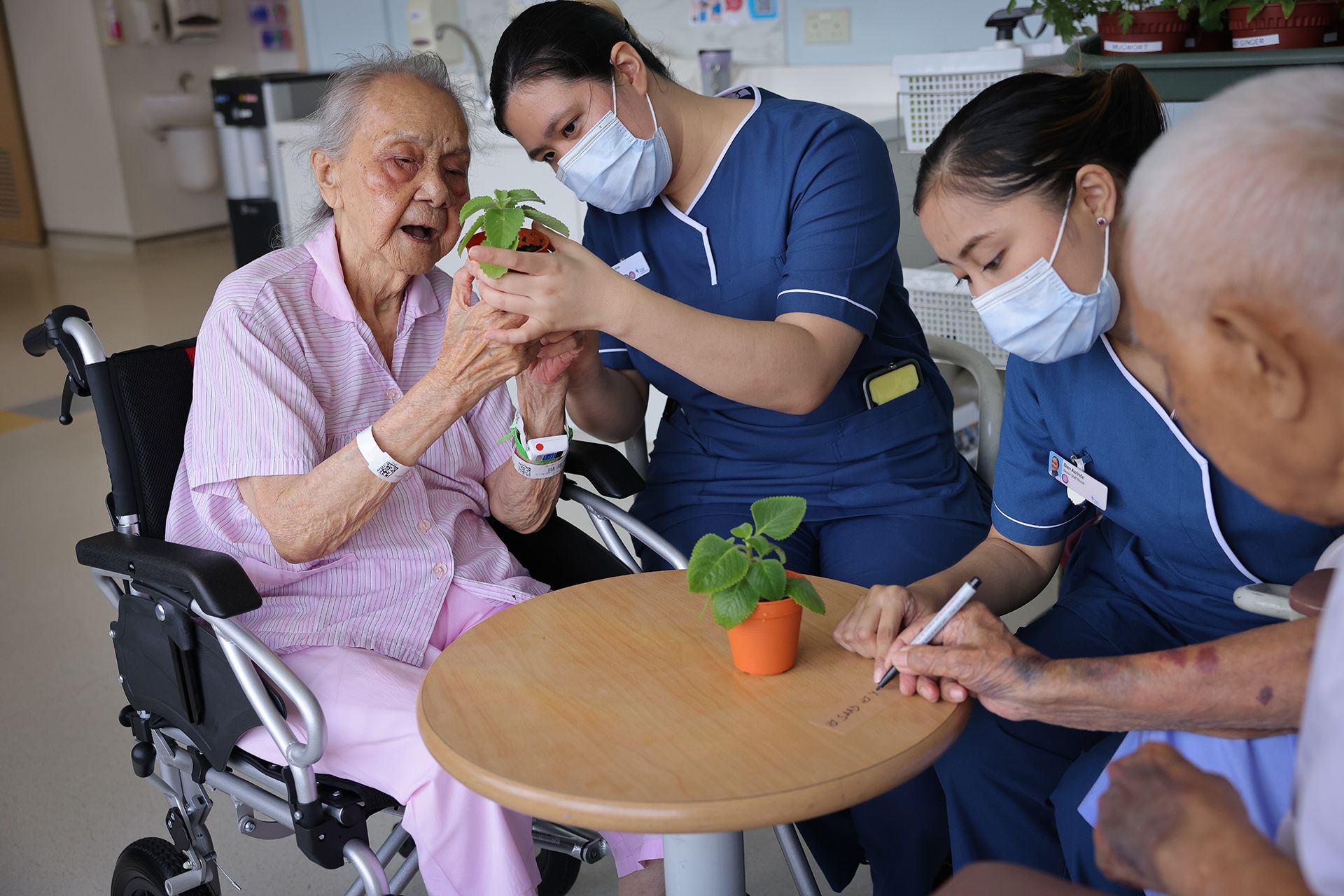
Ms Giang says: “Sometimes, the plants are just a means for us to build rapport and bond with the patients.”
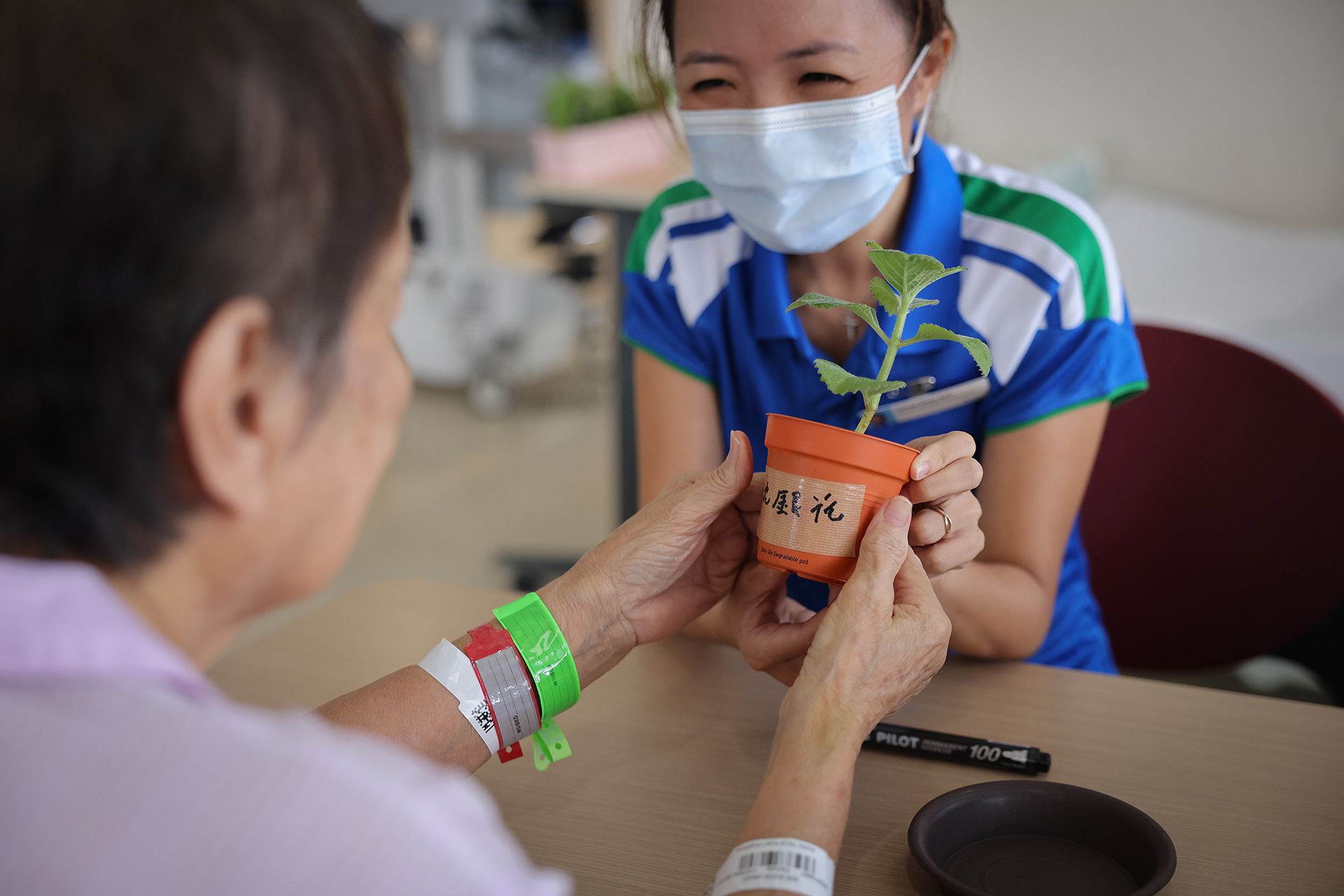
“The plants also help the patients see us not as just hospital staff, but also as friends who share an activity. They also feel that they still live a life here. And so, this programme for the patients is very meaningful to me.”